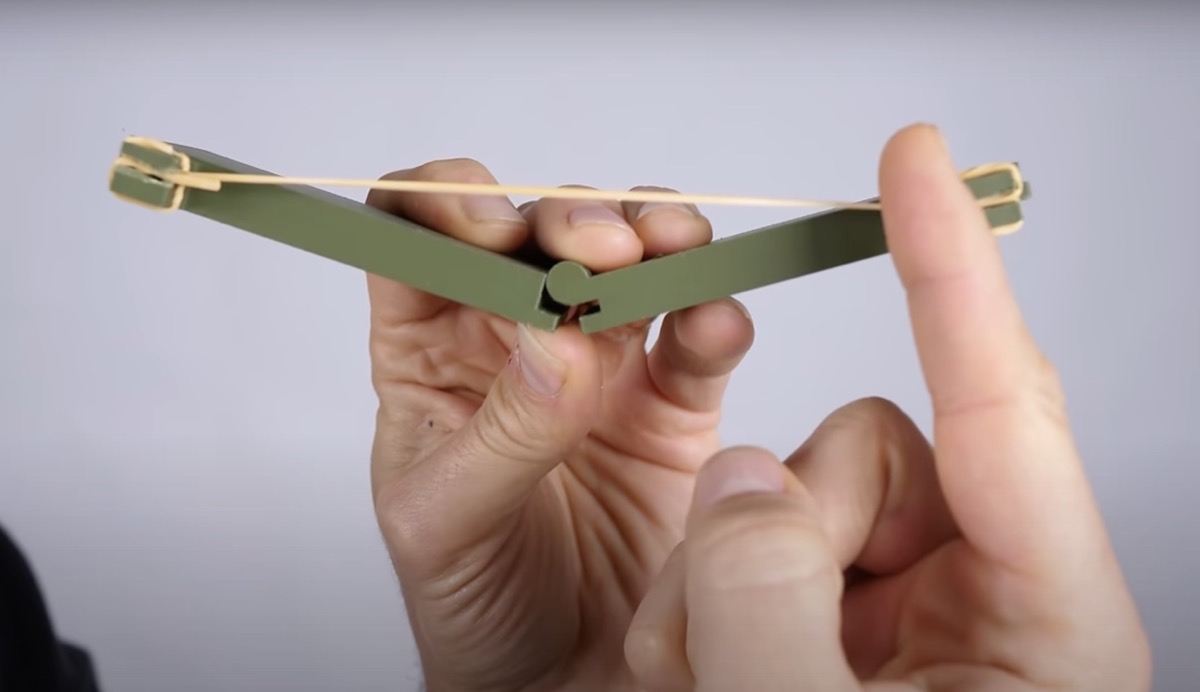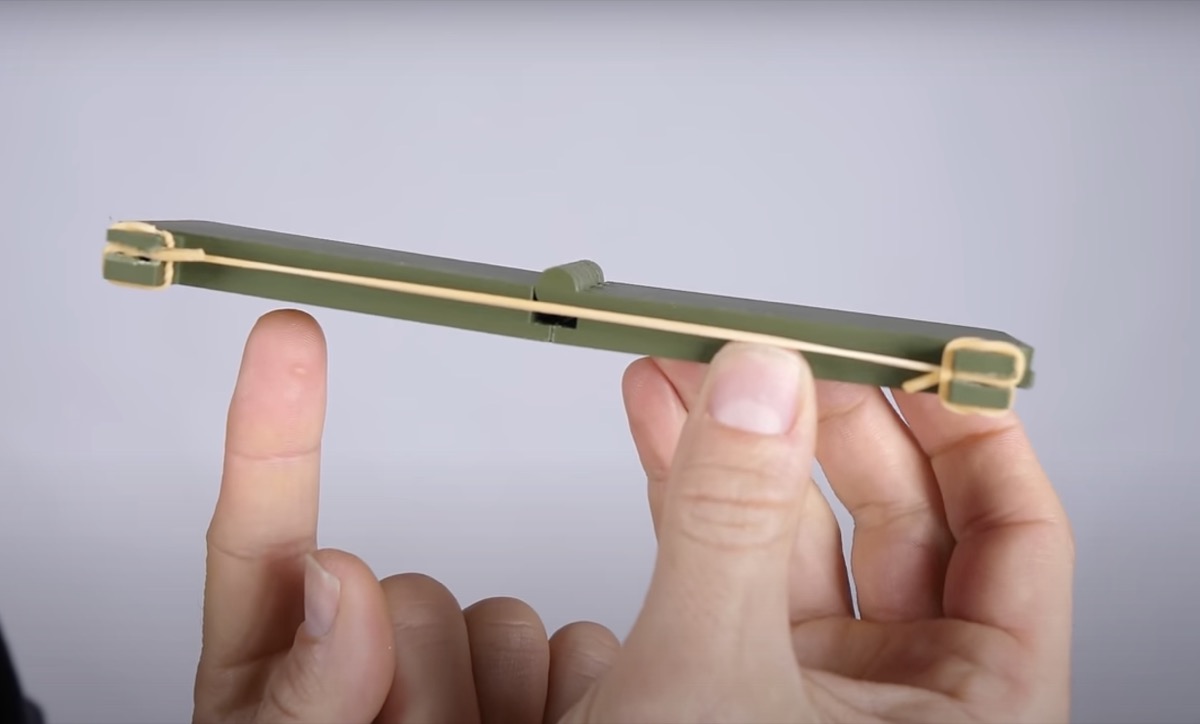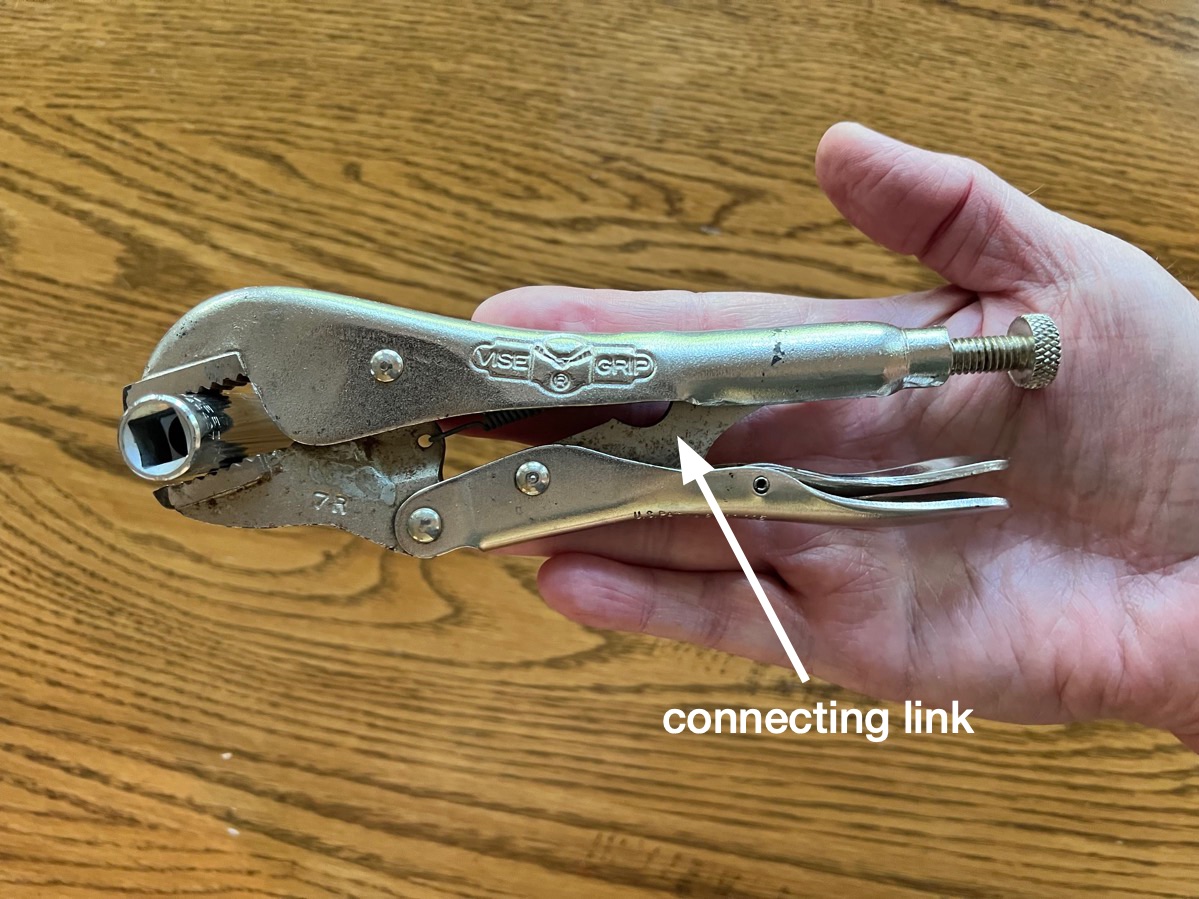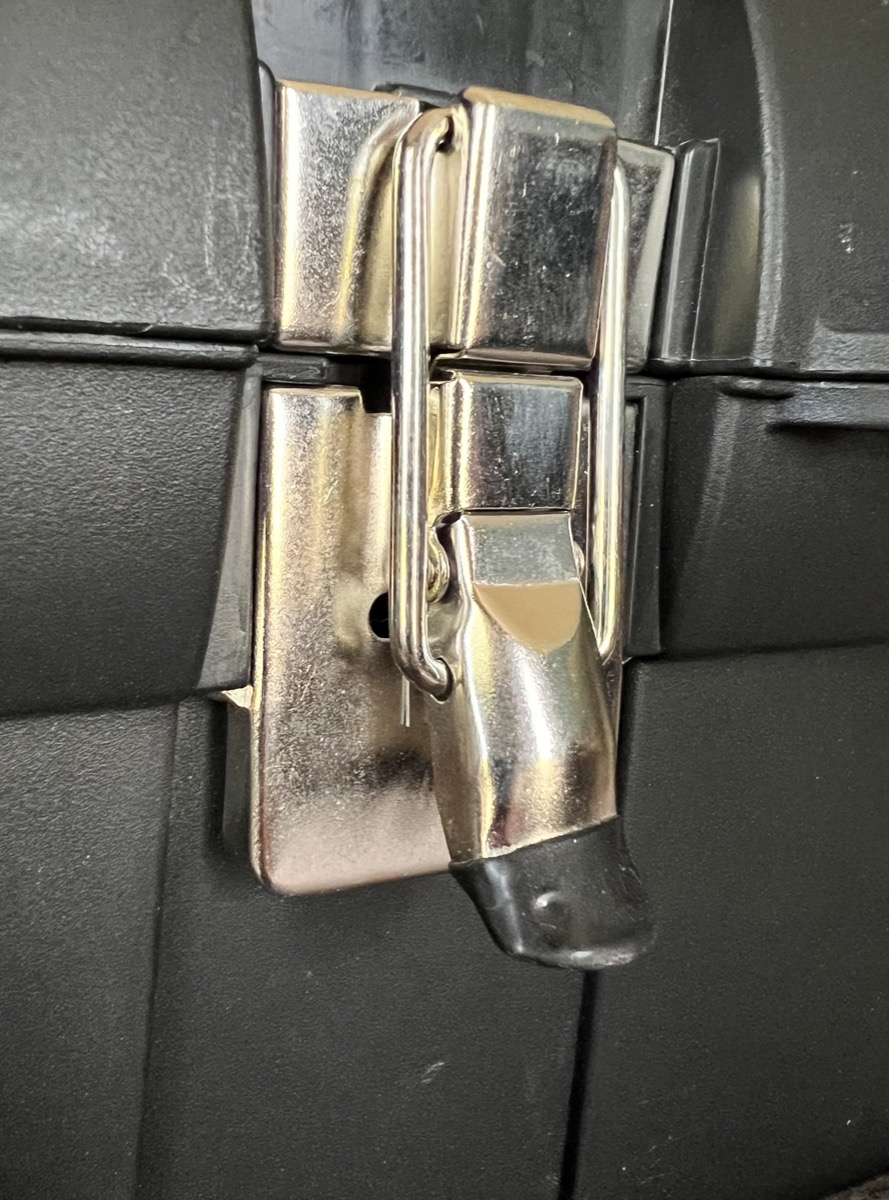Over center
May 1, 2024 at 1:48 PM by Dr. Drang
I saw Steve Mould’s latest video this morning. It’s about mechanisms that store elastic energy and release it quickly. His examples come from insects and human-made devices. You should take 15 minutes and watch it.
In previous reviews of Mould’s videos (here and here), I did some mechanics analysis to explain the videos in a more detailed (or just plain different) way. I’m not going to do that today, but I do have a brief comment on the question he raises at the end of the video, starting at about the 11:30 mark.
It concerns this mechanism he made with two rods hinged together and connected at their far ends by an elastic band.


Here’s his description:
It gets harder and harder to open this thing up as the elastic becomes more and more stretched. But actually, beyond a certain point it gets easier again. And that’s because of the shallow angle of the elastic. Only a small component of the force from the elastic is perpendicular to the arm. So it gets easier and easier and easier until it passes the pivot point. It’s actually slightly holding it open now. And you only need a really small force to close it again.
Mould felt sure he’d seen this kind of mechanism before, but he couldn’t come up with an example. He asked around and didn’t get any satisfactory answers, probably because he was asking a bunch of physicists and mathematicians.
It’s an over-center mechanism. I can’t think of any engineer or mechanic I’ve ever known who wouldn’t identify it immediately as such. It’s commonly used to latch or lock mechanisms in place. The most obvious example I could get my hands on in a hurry was a pair of vise grips.

As you squeeze the handles together, the mechanism reaches a point where the connecting link that runs between the handles snaps through into the locking position and whatever is between the jaws is held securely with no more effort from the user.
Another example is the latch on my toolbox.1

Here it’s in the not-quite-latched position. When you push the bottom end of the lever the rest of the way in, the inverted U of the clasp squeezes the parts together and moves to the other side of the lever’s pivot point, locking the mechanism in place.
What’s interesting about Mould’s attempts to describe the mechanism is that he very nearly comes up with its name. He says “over the hump” a couple of times, and that is so close to “over center” that I half-expected him to answer the question on his own before the end of the video.
“Over the hump” reminds me of this post (one of my favorites) about the load-deflection curve of a toggle mechanism. Which is also an over-center device.
-
Why didn’t I notice the latch on the toolbox before I opened it to pull out the vise grips? Because I had vise grips on my mind. ↩

